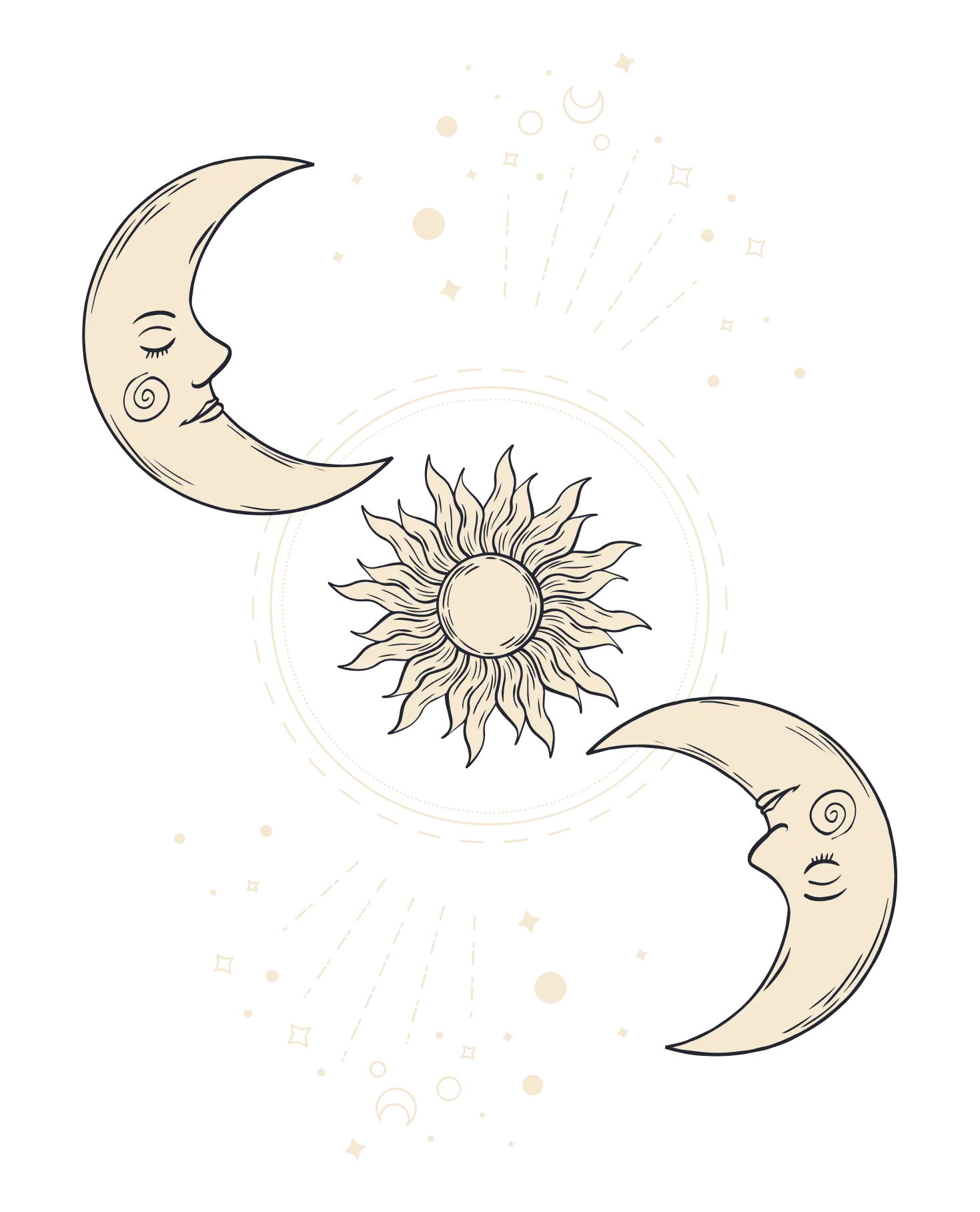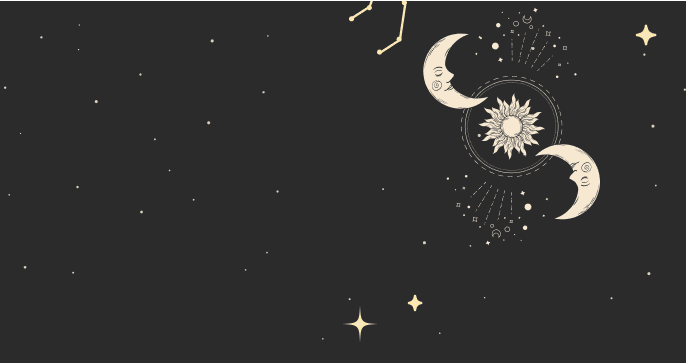Tarot and Numerology
For centuries, both numerology and tarot have served as powerful divinatory systems, each uncovering layers of meaning hidden within numbers and symbols.
Numerology views numbers as carriers of vibrational energy and cosmic order, while tarot offers a visual language of archetypes and narratives. When these two systems merge, they provide a framework for personal insight—allowing one to use birthdates and recurring numbers to reveal correspondences in tarot cards, and to deepen one’s understanding of life’s journey.
✨✍️ This article is part of our new MoonX Creators Program. Want to join and become an author? Learn more at https://moonxcreators.tilda.ws/
Ancient Beginnings & Pythagorean Influence 🏛️
The roots of numerology stretch back to ancient civilizations. In ancient Greece, Pythagoras and his followers believed that numbers were the very fabric of the universe, holding both mystical and mathematical significance. This early numerological insight eventually permeated various esoteric traditions and later became a vital component of tarot symbolism.
Renaissance Revival & Esoteric Traditions 🌟
During the Renaissance, scholars and occultists such as Cornelius Agrippa and Eliphas Levi revived interest in mystical systems that combined numerology, astrology, and tarot. The integration of numerology into tarot was further enhanced by Hermeticism and the Kabbalistic tradition, which assigned spiritual meanings to numbers and linked them to cosmic energies. Tarot decks like the Rider-Waite and Thoth decks incorporate these principles, embedding numerological references into the imagery and structure of the cards.
The Major Arcana of the tarot is sequentially numbered—from 0 (The Fool) through 21 (The World)—and each number is imbued with its own symbolic resonance. This numerical structure not only serves as an organizational tool but also deepens the interpretative potential of each card by aligning its archetypal themes with universal numerical energies.
Each Major Arcana card corresponds to a specific number, providing a symbolic bridge between numerology and tarot. Here are some key correspondences:
• 0️⃣ – The Fool:
Numerological Vibration: Represents infinite potential and the beginning of a journey.
Interpretation: As the unnumbered card, The Fool embodies spontaneity, risk, and the willingness to embark on new adventures without preconceived limits.
• 1️⃣ – The Magician:
Numerological Vibration: The number one signifies creation, initiative, and the birth of ideas.
Interpretation: The Magician is a master of manifestation, using willpower and creativity to turn visions into reality. His energy is rooted in the pioneering force of unity and singularity.
• 2️⃣ – The High Priestess:
Numerological Vibration: Two represents duality, balance, and the interplay of opposites.
Interpretation: The High Priestess symbolizes intuition, mystery, and the hidden realm. Her presence encourages reflection and the integration of inner wisdom.
• 3️⃣ – The Empress:
Numerological Vibration: The number three is associated with creativity, growth, and expression.
Interpretation: Embodying fertility and abundance, The Empress is nurturing and artistic, reflecting the creative power inherent in nature.
• 4️⃣ – The Emperor:
Numerological Vibration: Four conveys stability, structure, and order.
Interpretation: The Emperor stands as a symbol of authority, leadership, and the establishment of boundaries, much like the solid foundation of the number four.
• 5️⃣ – The Hierophant:
Numerological Vibration: The number five relates to change, exploration, and dynamic energy.
Interpretation: The Hierophant bridges the realms of tradition and transformation, offering guidance while encouraging seekers to explore spiritual wisdom within established systems.
• 6️⃣ – The Lovers:
Numerological Vibration: Six reflects harmony, balance, and relational dynamics.
Interpretation: Beyond romantic connotations, The Lovers card signifies meaningful choices and the integration of dualities—mirroring the balanced energy of six.
• 7️⃣ – The Chariot:
Numerological Vibration: The number seven is often linked to introspection, spiritual insight, and the quest for truth.
Interpretation: The Chariot represents victory through determination and willpower, urging individuals to harness inner strength and steer their destiny with focused intent.
• 8️⃣ – Strength:
Numerological Vibration: Eight is the number of power, resilience, and transformation.
Interpretation: Strength depicts courage and the mastery of one’s impulses. Its energy underscores the balance between raw power and gentle control.
• 9️⃣ – The Hermit:
Numerological Vibration: Nine embodies wisdom, introspection, and completion.
Interpretation: The Hermit is a guide for the inner journey, inviting contemplation, solitude, and the pursuit of higher knowledge.
• 🔟 – Wheel of Fortune:
Numerological Vibration: Ten symbolizes cycles, transitions, and the completion of a phase.
Interpretation: The Wheel of Fortune reflects the ever-changing nature of life and the interplay of fate and free will.
• 1️⃣1️⃣ to 2️⃣1️⃣ :
Cards 11 (often Justice or Strength, depending on the deck), 12 (The Hanged Man), 13 (Death), 14 (Temperance), 15 (The Devil), 16 (The Tower), 17 (The Star), 18 (The Moon), 19 (The Sun), 20 (Judgement), and 21 (The World) continue this sequence—each number layering additional dimensions of meaning, from the trials of transformation (Death, 13) to the harmonious balance of Temperance (14) and the ultimate fulfillment represented by The World (21).
These correspondences are not fixed; many esoteric traditions and tarot practitioners develop their own associations based on numerological systems like the Pythagorean or Chaldean methods. Regardless, the unifying thread is that each card’s number provides a key to its deeper meaning—a lens through which to understand the archetypal energies at work.
Integrating numerology into tarot practice can deepen your interpretative skills and personal insights. Here are a few practical steps:
1. Calculate Your Life Path Number:
Add together the digits of your birthdate until you reach a single digit (or a master number). This number often resonates with the energy of a particular tarot card, offering clues to your inherent strengths and challenges.
2. Align Card Meanings with Numerological Insights:
When a card appears in a reading, note its numerical designation. Research its numerological significance and reflect on how that energy aligns with your current life circumstances. For example, if you draw The Magician (1), consider the ways in which creation and initiative are at play in your situation.
3. Create Customized Spreads:
Develop tarot spreads that include positions dedicated to numerological insights. For instance, one position might be reserved for your “numerical signature” derived from your birthdate, providing a focal point for understanding recurring themes in your readings.
4. Recognize Patterns:
Over time, track recurring numbers in your tarot spreads. These patterns can reveal important cycles or lessons that are guiding your personal development.
Conclusion
The intricate interplay between numerology and tarot enriches both systems, weaving together ancient wisdom and modern insight. By understanding the historical roots of numerological symbolism—from the Pythagorean philosophies to Renaissance esoteric traditions—and by exploring the detailed correspondences within the Major Arcana, practitioners can unlock a multidimensional perspective on their life journey. Whether you use your birthdate to uncover your personal tarot correspondence or study the layered meanings of numbered cards, the union of tarot (card divination) and numerology offers a transformative pathway to self-discovery and deeper spiritual guidance.
Comments


Discover more fascinating insights and stay updated on all lunar events in the MoonX app.
Popular questions
EVERYDAY WELLBEING
Start Your Guided Cosmic
Journey with MoonX
Build out your own personalized spiritual practices with MoonX today
compatibilityhoroscopebirth chartmediate sleephealing soundjournaltarotgratitudereduce stress